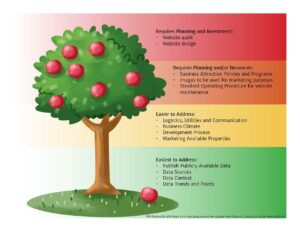Internal marketing is defined as a management philosophy of promoting the community and its policies or goals to employees or other stakeholders as if they were customers. It is critical for change management and political support for any project or economic development/redevelopment effort. As an important implementation tool, internal marketing aids communications and helps to overcome any resistance to change. It informs and involves staff and other stakeholders on new projects, new initiatives and new thought processes.
The internal customers need to be marketed to just as external customers. In a community, internal marketing may pertain to municipal staff, other organizations’ staff members, elected officials, and private sector stakeholders. With any project or effort, supporters and detractors will exist. It is important to solidify the message and have other internal “customer” accept it so there will be support to the other internal stakeholders.
Internal marketing can be executed similarly to traditional marketing. There is a message and it needs to be communicated. Public meetings, newsletters, information session, postings on web sites, and small group discussions are all ways to communicate an internal message to community stakeholders. Before the community markets its offerings to outside entities, it’s important to make sure the internal stakeholders are singing out of the same songbook. Communicate economic development goals, redevelopment goals, workforce development goals, and even marketing goals to the groups of individuals and organizations which will help carry that water when there is a prospect in town. We have probably all heard stories of the prospect that slipped into town unannounced and asked a gas station attendant something about the community and received a negative impression, thus choosing to locate their business elsewhere. It has happened in personal experience where a certain municipal department almost unraveled a deal for a new development because they were set on enforcing the certain flow of storm water and weren’t interested or able to provide optional solutions, just one way of doing something that would have cost the business too much money to make the deal feasible. Fortunately we saved the deal, but this is the perfect example of internal marketing. All staff members, Chamber of Commerce representatives, and other related parties understand the goals and are willing to contribute to the achieving of those goals.
The cultural climate needs to be willing to accept the concepts and processes behind the goals. It’s not necessary to have everyone on board before beginning to execute an external marketing strategy but it’s very important not to forget the internal customers.






